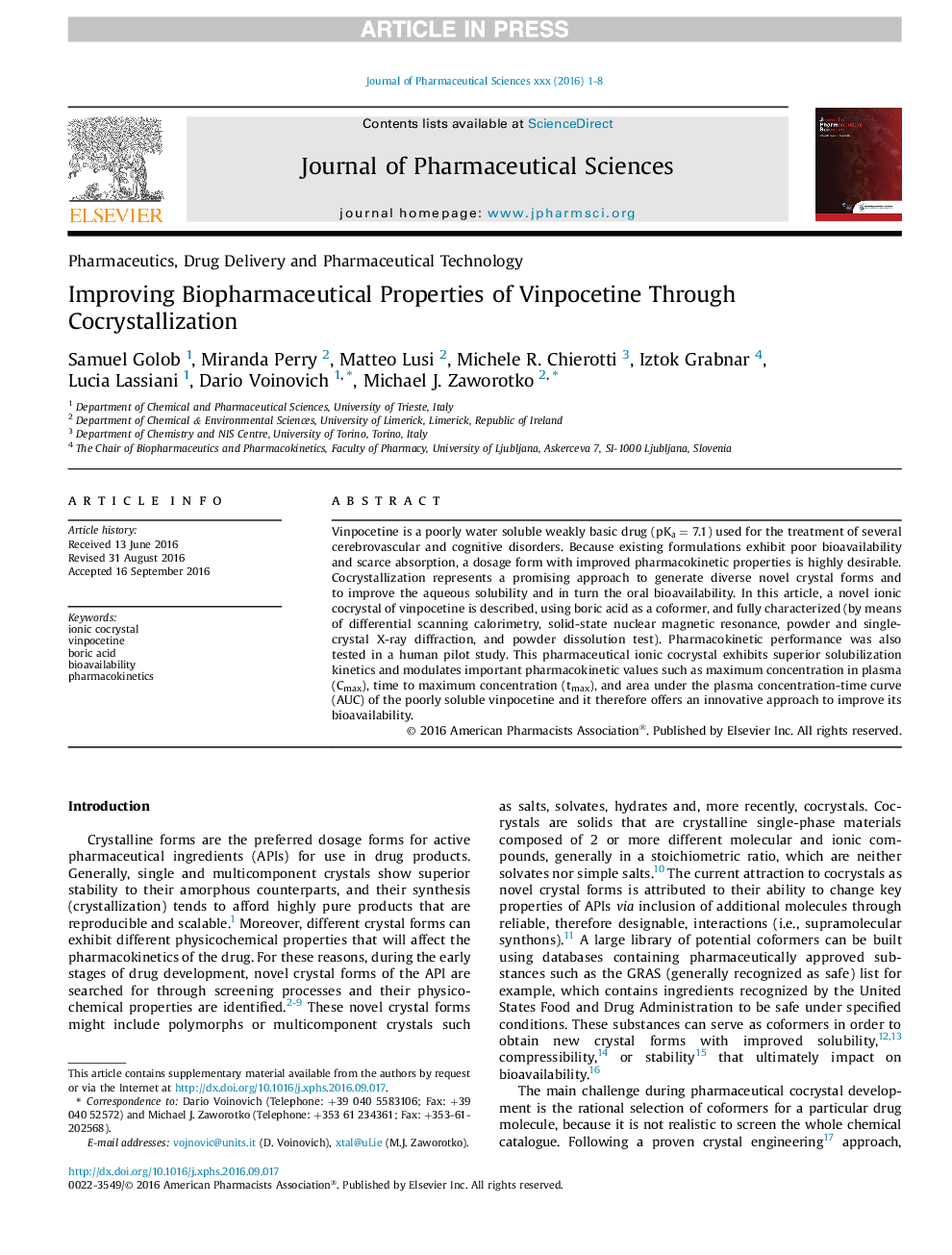| Article ID | Journal | Published Year | Pages | File Type |
|---|---|---|---|---|
| 8514763 | Journal of Pharmaceutical Sciences | 2016 | 8 Pages |
Abstract
Vinpocetine is a poorly water soluble weakly basic drug (pKa = 7.1) used for the treatment of several cerebrovascular and cognitive disorders. Because existing formulations exhibit poor bioavailability and scarce absorption, a dosage form with improved pharmacokinetic properties is highly desirable. Cocrystallization represents a promising approach to generate diverse novel crystal forms and to improve the aqueous solubility and in turn the oral bioavailability. In this article, a novel ionic cocrystal of vinpocetine is described, using boric acid as a coformer, and fully characterized (by means of differential scanning calorimetry, solid-state nuclear magnetic resonance, powder and single-crystal X-ray diffraction, and powder dissolution test). Pharmacokinetic performance was also tested in a human pilot study. This pharmaceutical ionic cocrystal exhibits superior solubilization kinetics and modulates important pharmacokinetic values such as maximum concentration in plasma (Cmax), time to maximum concentration (tmax), and area under the plasma concentration-time curve (AUC) of the poorly soluble vinpocetine and it therefore offers an innovative approach to improve its bioavailability.
Related Topics
Health Sciences
Pharmacology, Toxicology and Pharmaceutical Science
Drug Discovery
Authors
Samuel Golob, Miranda Perry, Matteo Lusi, Michele R. Chierotti, Iztok Grabnar, Lucia Lassiani, Dario Voinovich, Michael J. Zaworotko,
